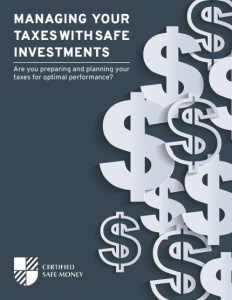Long-Term Financial Planning: Education on Safe Money Management and Asset Protection
Long-term financial planning is essential for achieving and maintaining financial stability and security. It involves creating strategies that ensure your money grows, is protected, and is efficiently managed over time. Key components of long-term financial planning include safe money management and asset protection. Education in these areas empowers individuals to make informed decisions, safeguard their wealth, and achieve their financial goals. Here’s a guide to understanding and implementing safe money management and asset protection as part of your long-term financial planning.
Understanding Safe Money Management
Safe money management focuses on preserving capital while still achieving modest growth. It involves adopting strategies that minimize risk and ensure financial stability. Here are some fundamental principles of safe money management:
1. Budgeting and Saving
Creating a budget is the first step in safe money management. A budget helps you track income and expenses, ensuring that you live within your means. Allocate a portion of your income to savings, and prioritize building an emergency fund that can cover three to six months’ worth of living expenses. An emergency fund provides a financial cushion against unexpected expenses, reducing the need to rely on credit or loans.
2. Diversification
Diversification involves spreading your investments across various asset classes to reduce risk. A well-diversified portfolio might include stocks, bonds, real estate, and cash equivalents. Diversification helps mitigate the impact of poor performance in any single asset class, contributing to overall financial stability.
3. Low-Risk Investments
Incorporate low-risk investments into your portfolio to preserve capital. Examples include:
- Bonds: Government bonds, municipal bonds, and high-quality corporate bonds offer predictable returns with lower risk compared to stocks.
- Certificates of Deposit (CDs): CDs provide fixed interest rates over specified terms, offering stability and predictable returns.
- Dividend-Paying Stocks: Invest in stocks from well-established companies that pay regular dividends. These stocks provide a steady income stream and potential for capital appreciation.
- High-Yield Savings Accounts and Money Market Funds: These accounts offer higher interest rates than regular savings accounts while maintaining liquidity and safety.
4. Regular Rebalancing
Regularly review and rebalance your portfolio to maintain your desired asset allocation. Over time, the value of different investments will change, causing your portfolio to drift from its original allocation. Rebalancing involves selling overperforming assets and buying underperforming ones to restore balance, ensuring that your portfolio remains aligned with your risk tolerance and financial goals.
5. Tax-Efficient Investing
Tax-efficient investing involves strategies to minimize tax liabilities and maximize after-tax returns. Utilize tax-advantaged accounts such as 401(k)s, IRAs, and Roth IRAs for retirement savings. Consider investing in tax-efficient funds like index funds and ETFs, which typically have lower turnover rates and generate fewer taxable events.
Asset Protection Strategies
Asset protection focuses on safeguarding your wealth from potential risks such as lawsuits, creditors, and other financial threats. Here are essential asset protection strategies:
1. Insurance
Insurance is a critical component of asset protection. It provides financial coverage against various risks, ensuring that your assets are not depleted by unexpected events. Key types of insurance include:
- Health Insurance: Covers medical expenses, protecting your savings from high healthcare costs.
- Life Insurance: Provides financial support to your dependents in the event of your death. Term life insurance offers coverage for a specific period, while whole life insurance provides lifelong coverage with a cash value component.
- Disability Insurance: Replaces a portion of your income if you are unable to work due to illness or injury.
- Property and Casualty Insurance: Protects your home, vehicles, and personal belongings from damage or loss.
- Liability Insurance: Shields your assets from legal claims and lawsuits.
2. Estate Planning
Estate planning ensures that your assets are distributed according to your wishes and that your loved ones are taken care of after your death. Key components of estate planning include:
- Wills: Legal documents that outline how your assets should be distributed after your death. They also allow you to name guardians for minor children.
- Trusts: Legal entities that hold and manage assets on behalf of beneficiaries. Trusts can provide greater control over asset distribution, offer privacy, and help avoid probate.
- Power of Attorney: Grants someone the authority to make financial and legal decisions on your behalf if you become incapacitated.
- Healthcare Directives: Include living wills and healthcare proxies, which outline your medical preferences and designate someone to make healthcare decisions if you cannot do so yourself.
3. Legal Structures
Utilizing legal structures can protect your assets from creditors and lawsuits. Examples include:
- Limited Liability Companies (LLCs): Holding assets such as real estate or business interests in an LLC can shield your personal wealth from liabilities associated with those assets.
- Family Limited Partnerships (FLPs): Allow you to transfer assets to family members while retaining control over the management of those assets. FLPs provide asset protection benefits and facilitate wealth transfer to the next generation.
4. Homestead Exemptions
Many states offer homestead exemptions that protect a portion of the equity in your primary residence from creditors. This exemption provides significant protection for one of your most valuable assets.
The Role of Financial Education
Financial education is crucial for understanding and implementing safe money management and asset protection strategies. Here are ways to enhance your financial literacy:
1. Reading and Research
Read books, articles, and reputable online resources on personal finance, investing, and estate planning. Educating yourself on these topics empowers you to make informed decisions and develop effective financial strategies.
2. Financial Courses and Workshops
Participate in financial courses and workshops offered by community colleges, financial institutions, and online platforms. These courses cover a wide range of topics, from basic budgeting to advanced investment strategies and estate planning.
3. Professional Advice
Consulting with financial advisors, estate planners, and tax professionals can provide personalized guidance tailored to your specific financial situation and goals. Professionals can help you create a comprehensive financial plan, select appropriate investments, and implement asset protection strategies.
Conclusion
Long-term financial planning, incorporating safe money management and asset protection strategies, is essential for achieving financial stability and security. By diversifying investments, focusing on capital preservation, implementing tax-efficient investing, and utilizing insurance and legal structures, you can protect and grow your wealth. Financial education empowers you to make informed decisions, ensuring that your financial future is secure and prosperous. With careful planning and ongoing education, you can build a robust financial foundation that supports your goals and provides peace of mind for years to come.
Contact Information:
Email: paul@boppfinancialsolutions.com
Phone: 1480216419
Bio:
Paul Bopp, a dedicated licensed insurance agent, has been serving clients with their life and health insurance needs since 2002. Specializing in Indexed Universal Life (IUL) policies and annuities, Paul has built a reputation for providing comprehensive and personalized financial solutions to his clients.
Originally from New York, Paul moved to Arizona 23 years ago, where he has continued to grow both personally and professionally. He is a devoted family man, married with four wonderful children—three daughters and one son. His commitment to his family mirrors his dedication to his clients, ensuring they receive the best possible advice and service in managing their insurance needs.
With over two decades of experience in the industry, Paul combines his extensive knowledge with a passion for helping individuals and families secure their financial future. His expertise in IUL and annuities allows him to offer tailored strategies that meet the unique goals and circumstances of each client.










